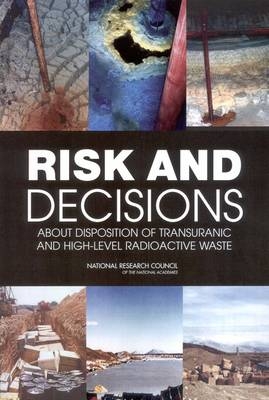
Risk and Decisions About Disposition of Transuranic and High-Level Radioactive Waste
Seiten
2005
National Academies Press (Verlag)
978-0-309-09549-5 (ISBN)
National Academies Press (Verlag)
978-0-309-09549-5 (ISBN)
The US Department of Energy (DOE) manages sites across the nation that focus on research, design, and production of nuclear weapons and nuclear reactors for defense applications. This report addresses how DOE should incorporate risk into decisions about whether the nation should use alternatives to deep geologic disposal for some of these wastes.
The U.S. Department of Energy (DOE) manages dozens of sites across the nation that focus on research, design, and production of nuclear weapons and nuclear reactors for defense applications. Radioactive wastes at these sites pose a national challenge, and DOE is considering how to most effectively clean them up. Some of the greatest projected risks, cleanup costs, and technical challenges come from processing and disposing transuranic and high-level radioactive waste. This report addresses how DOE should incorporate risk into decisions about whether the nation should use alternatives to deep geologic disposal for some of these wastes. It recommends using an exemption process involving risk assessment for determining how to dispose of problematic wastes. The report outlines criteria for risk assessment and key elements of a risk-informed approach. The report also describes the types of wastes that are candidates for alternative disposition paths, potential alternatives to deep geologic disposal for disposition of low-hazard waste, and whether these alternatives are compatible with current regulations.
The U.S. Department of Energy (DOE) manages dozens of sites across the nation that focus on research, design, and production of nuclear weapons and nuclear reactors for defense applications. Radioactive wastes at these sites pose a national challenge, and DOE is considering how to most effectively clean them up. Some of the greatest projected risks, cleanup costs, and technical challenges come from processing and disposing transuranic and high-level radioactive waste. This report addresses how DOE should incorporate risk into decisions about whether the nation should use alternatives to deep geologic disposal for some of these wastes. It recommends using an exemption process involving risk assessment for determining how to dispose of problematic wastes. The report outlines criteria for risk assessment and key elements of a risk-informed approach. The report also describes the types of wastes that are candidates for alternative disposition paths, potential alternatives to deep geologic disposal for disposition of low-hazard waste, and whether these alternatives are compatible with current regulations.
National Research Council
1 Front Matter; 2 Executive Summary; 3 1 Introduction and Background; 4 2 Why Consider Flexibility in Disposal Options?; 5 3 Exemption Process; 6 4 A Risk-Informed Approach: Procedures and Criteria for Risk Assessment to Support an Exemption Process; 7 5 Impediments to a Successful Application of the Risk-Informed Approach; 8 6 Findings and Recommendations; 9 References; 10 Appendix A Overview: Risk Assessment; 11 Appendix B Summary of Previous Studies and Programs Aimed at Incorporating Risk into DOE Environmental Management Decision Making; 12 Appendix C Information-Gathering Meetings; 13 Appendix D Glossary; 14 Appendix E Biographical Sketches of Committee Members
| Erscheint lt. Verlag | 7.3.2005 |
|---|---|
| Zusatzinfo | Illustrations |
| Verlagsort | Washington |
| Sprache | englisch |
| Maße | 152 x 229 mm |
| Themenwelt | Naturwissenschaften ► Biologie ► Ökologie / Naturschutz |
| ISBN-10 | 0-309-09549-2 / 0309095492 |
| ISBN-13 | 978-0-309-09549-5 / 9780309095495 |
| Zustand | Neuware |
| Haben Sie eine Frage zum Produkt? |
Mehr entdecken
aus dem Bereich
aus dem Bereich


